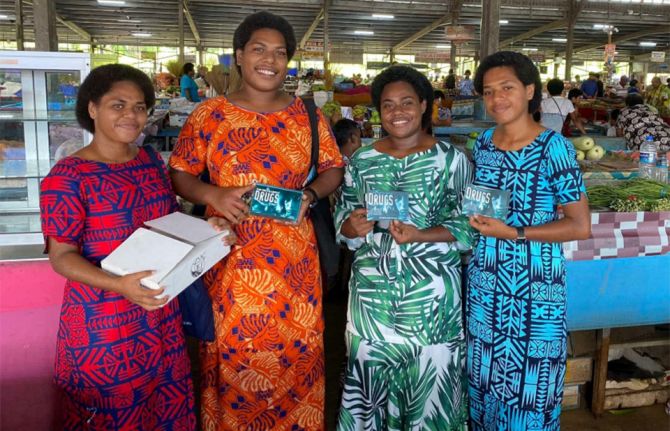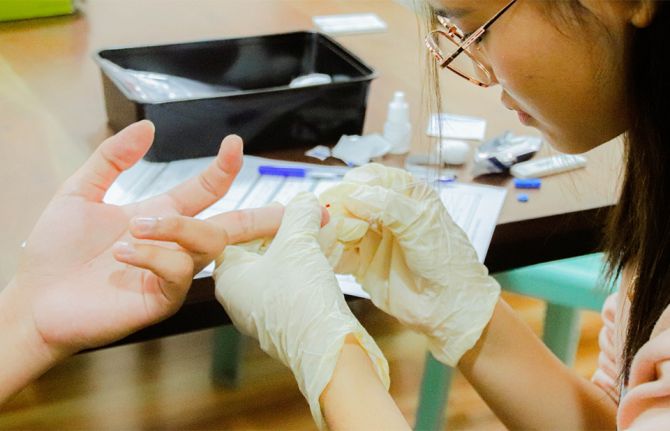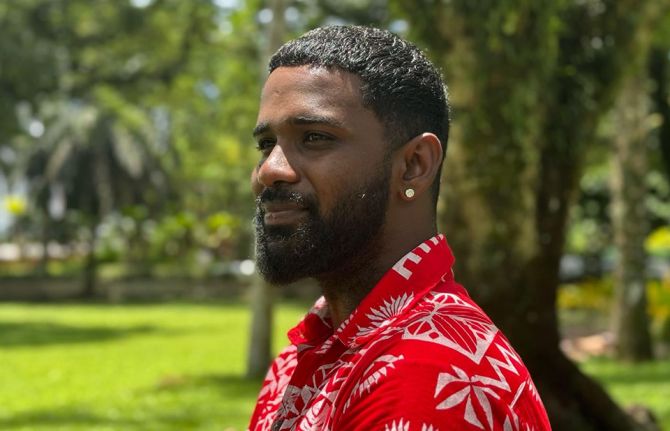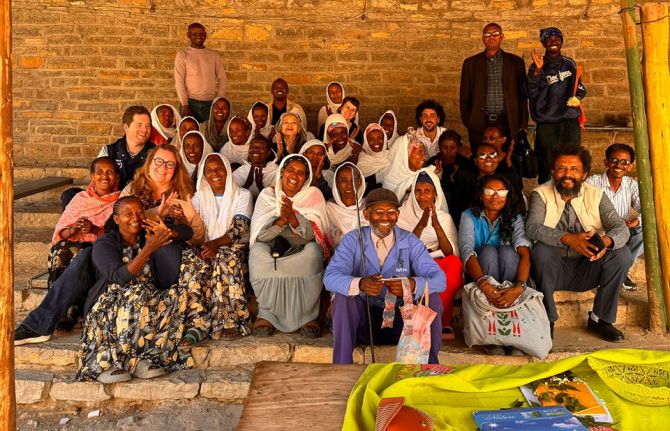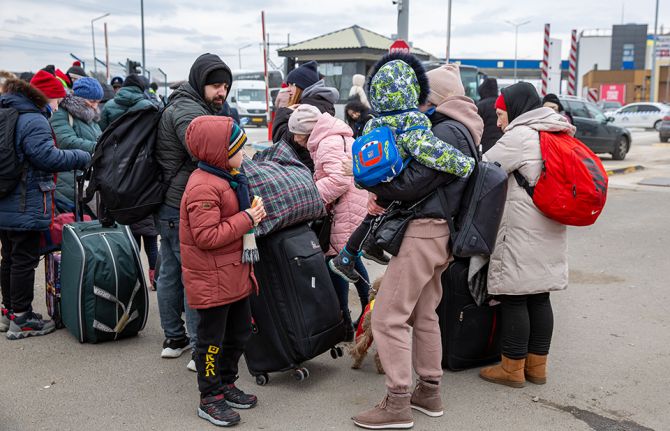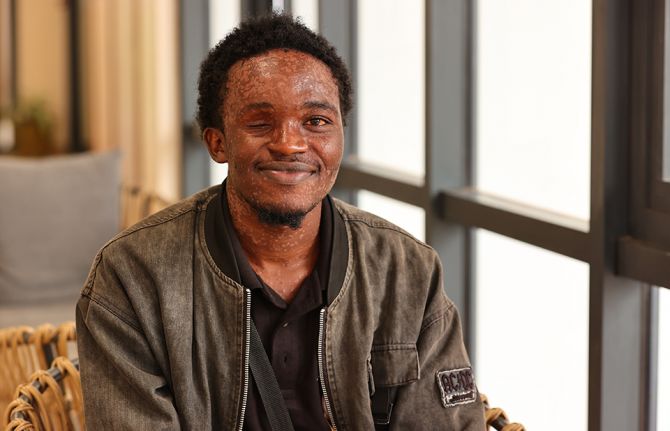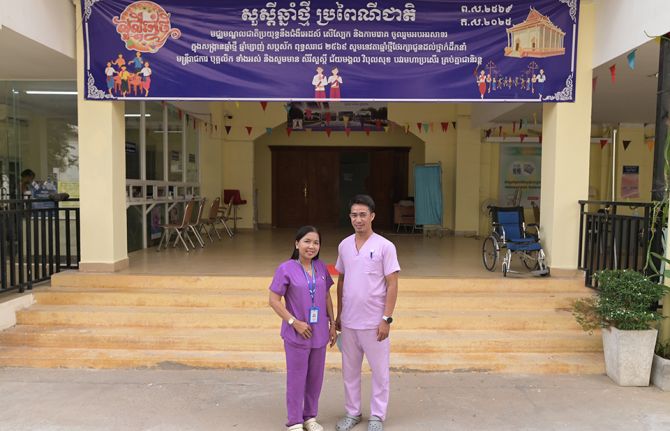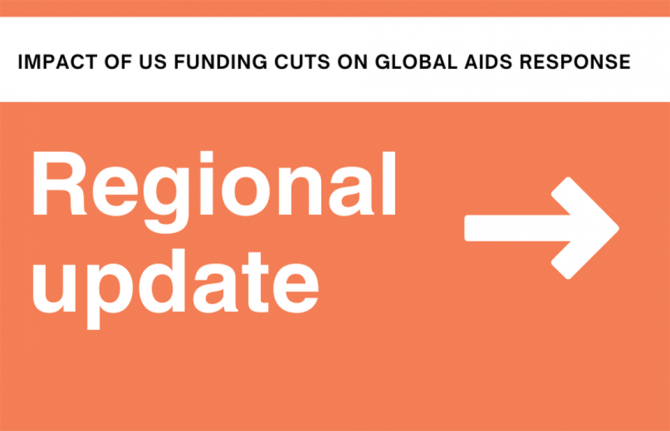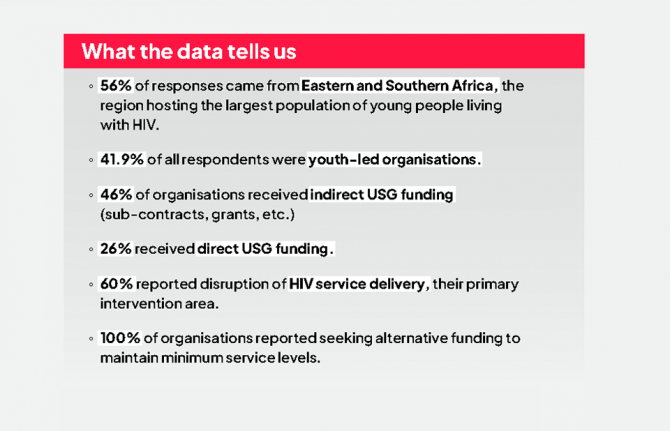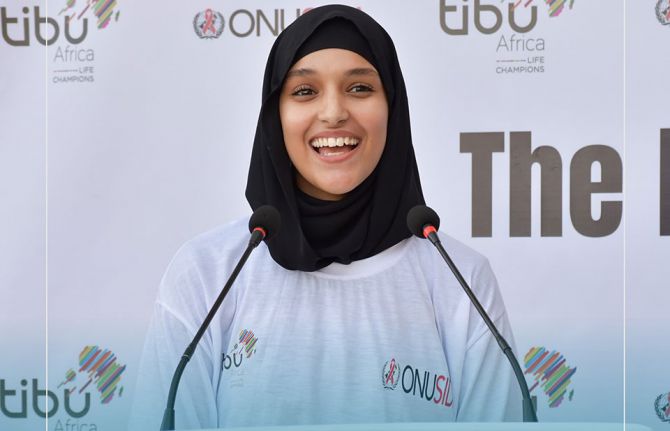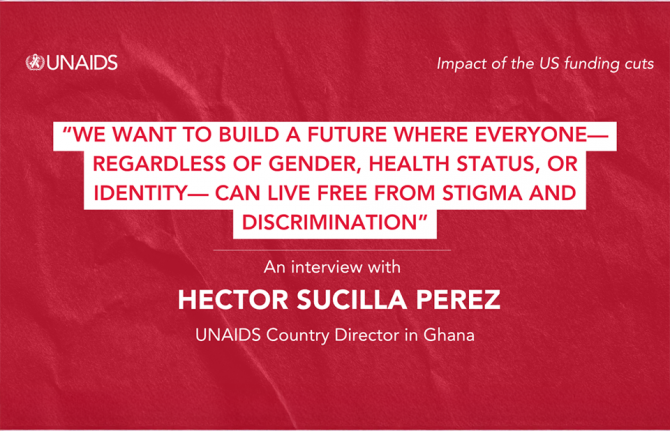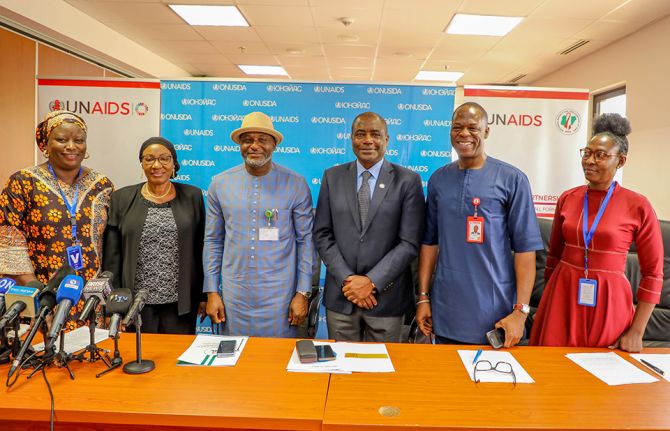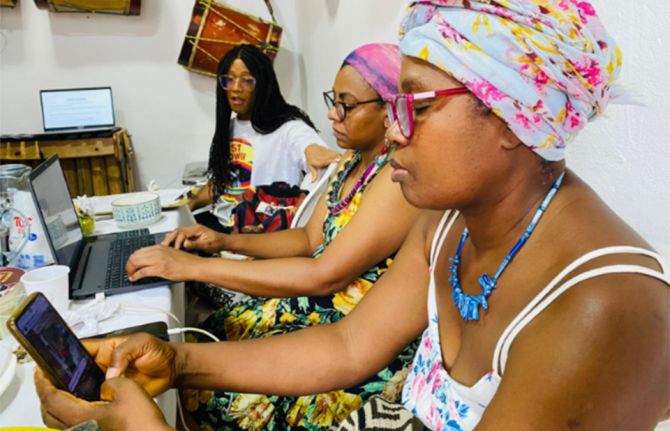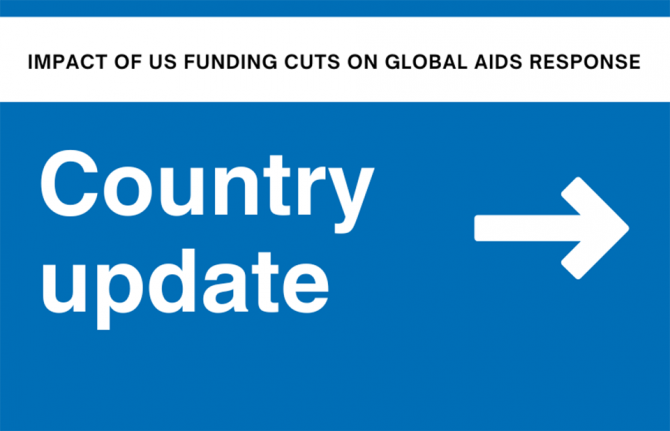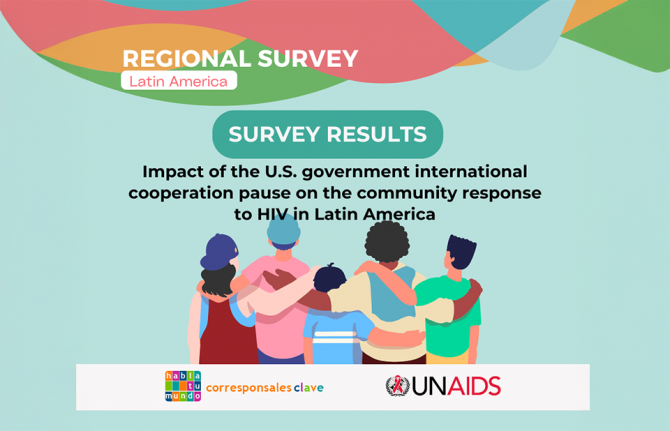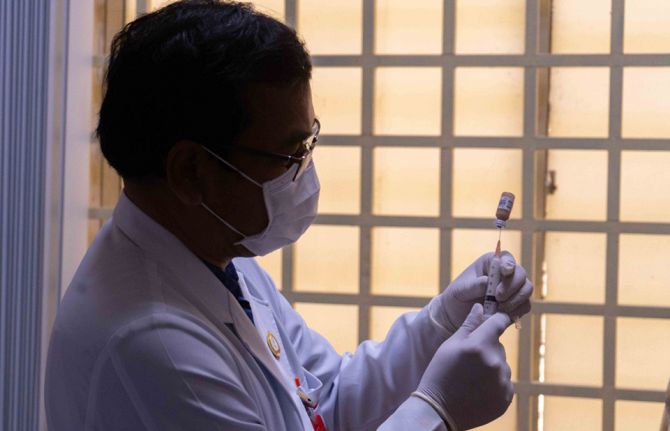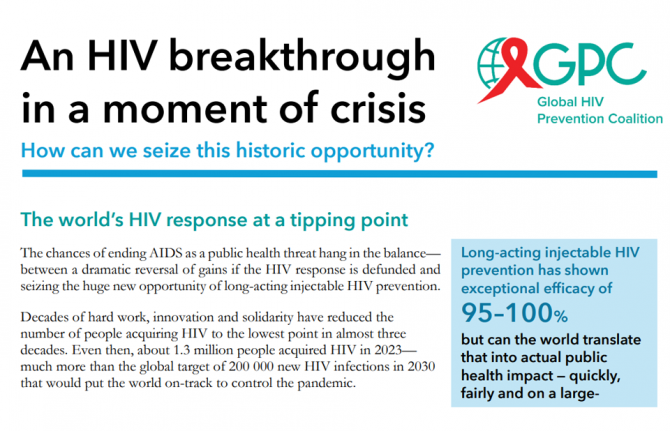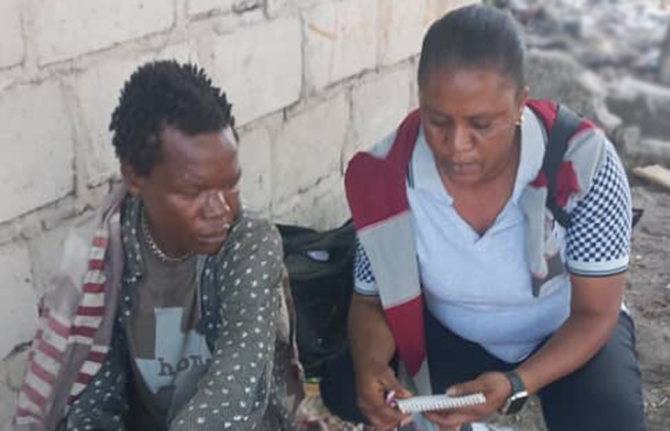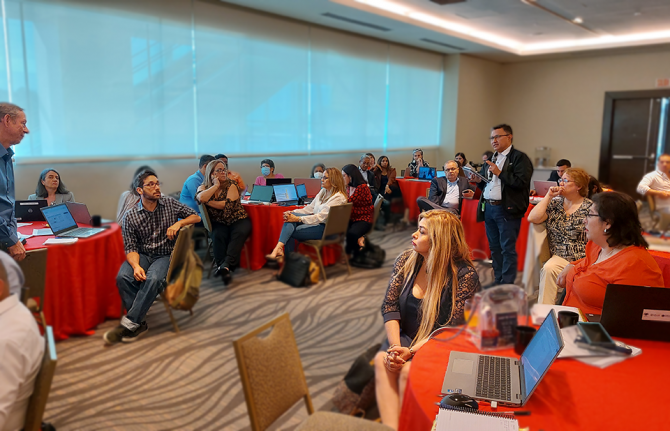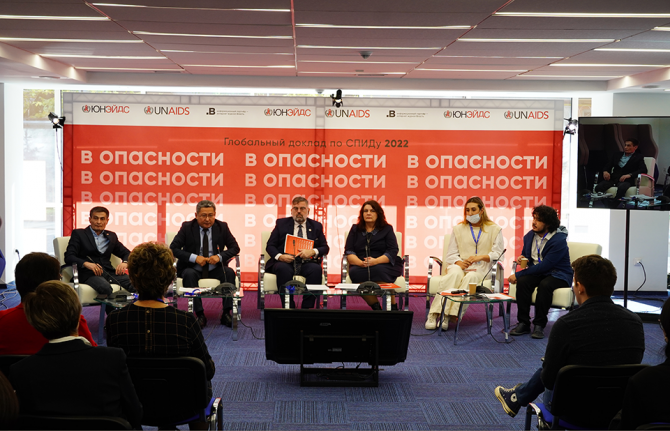
Feature Story
Asia-Pacific gears up for 10th International Congress on AIDS
22 August 2011
22 August 2011 22 August 2011
Several thousand participants from more than 55 countries are expected to gather in Busan, Republic of Korea from 26 to 30 August 2011 for the 10th International Congress on AIDS in Asia and the Pacific (ICAAP10).
Across the region, activists, government officials, international organizations, the United Nations, young people, media and other partners are gearing up for the five-day event, which takes place under the theme ‘Diverse Voices, United Action.’
Sessions on key regional priorities such as ensuring greater focus on and involvement of key populations at higher risk, legal and policy issues and funding the response will help shape the regional dialogue on AIDS and foster partnerships. Held every two years, ICAAP serves as a platform for governments, scientists, civil society and people living with HIV to share ideas from across the largest and most populated region of the world.
Following the 2011 United Nations General Assembly High Level Meeting on AIDS, the Congress will discuss how to drive the region towards the new targets that the international community set through the Political Declaration on HIV/AIDS.
Incredible progress has been made but these gains are fragile. ICAAP represents an important opportunity for the region to unite towards getting Asia and the Pacific to zero new HIV infections, zero discrimination and zero AIDS-related deaths
Michel Sidibé, UNAIDS Executive Director
“This is a critical moment for the AIDS response in Asia and the Pacific,” said Michel Sidibé, UNAIDS Executive Director, who will give the keynote speech and take part in a number of sessions. “Incredible progress has been made but these gains are fragile. ICAAP represents an important opportunity for the region to unite towards getting Asia and the Pacific to zero new HIV infections, zero discrimination and zero AIDS-related deaths,” he added.
Leading up to the event, a number of innovative strategies are underway to encourage greater participation and involvement in the regional Congress. As part of these efforts, Korean pop band ‘JYJ’ has promoted the event as Congress Ambassadors and will perform at the opening ceremony.
“This Congress comes at a critical moment in the AIDS response—30 years after AIDS was first discovered,” said Myung-Hwan CHO, Professor at Konkuk University in Korea and ICAAP10 Congress Chair. “ICAAP10 will be a platform for political leaders, affected communities and researchers in Asia and the Pacific to share experiences and renew commitment to the AIDS response.”
A UNAIDS report on the HIV epidemic and response in Asia and the Pacific will be launched on the opening day. The report will highlight the region’s specificities, challenges and the approaches pioneered to address HIV.
External links
External links

Feature Story
World Humanitarian Day: celebrating people helping people
19 August 2011
19 August 2011 19 August 2011
Every day humanitarian aid workers help millions of people around the world. World Humanitarian Day, marked on August 19, is an opportunity to celebrate people helping people.
In conjunction, the 2011 World Humanitarian Day campaign has partnered with the United Nations Department of Public Information to launch the 3rd annual Citizen Ambassadors video contest from 8 August 2011 to 8 September 2011.
The campaign gives an opportunity for anyone to pitch their best idea on how to change the world to the Secretary General of the United Nations, Mr Ban Ki-moon. The winners will win a trip to New York and the chance to pitch their idea in person to the Secretary General.
HIV in humanitarian situations

Feature Story
Global Fund Round 11: UNAIDS support countries to strengthen proposals
19 August 2011
19 August 2011 19 August 2011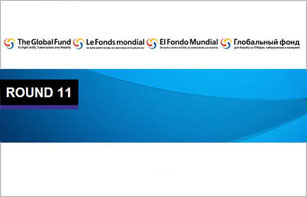
On 15 August 2011, the Global Fund to Fight AIDS, Tuberculosis and Malaria launched its Round 11 call for proposals.
This latest round of funding comes at a critical time in the global AIDS response, as countries work towards scaling up HIV prevention, treatment, care and support programmes and meeting the goals set out in the recently adopted 2011 Political Declaration on HIV/AIDS.
To support countries to submit high quality proposals, WHO and UNAIDS, in consultation with the other UNAIDS Cosponsors, have developed a resource kit for Global Fund Round 11 applications and a “toolkit for key populations proposals and for the targeted pool.”
“To maximize resources, countries need to be smarter in their investment choices,” said Tim Martineau, Director, Programme Effectiveness and Country Support Department, UNAIDS. “This toolkit will help countries make strategic decisions that bring about more results and fill critical gaps in national AIDS responses.”
This toolkit will help countries make strategic decisions that yield tangible impact and fill critical gaps in national AIDS responses
Tim Martineau, Director, Programme Effectiveness and Country Support Department, UNAIDS
The resource kit includes technical briefs and reference materials on key thematic areas to complement the Global Fund guidance for proposal writing. A special Resource Kit web site organized by thematic areas has been created and can be accessed via the UNAIDS and WHO web sites.
“This toolkit will go a long way in addressing some of the uncertainties and questions in developing a winning Global Fund proposal,” said Derek Aryee, Chair of the Country Coordinating Mechanism in Ghana.
Round 11 is an important opportunity for countries to consider key priority areas for inclusion in their proposals, including efforts to eliminate mother to child transmission of HIV, addressing TB-HIV co-infection, strengthening services for key populations and efforts to strengthen community system interventions.
UNAIDS is working closely with countries as they prepare their applications. Support provided includes direct technical assistance and strategic information through UNAIDS country offices, together with peer and expert reviews of proposals prior to the submission deadline of 15 December 2011.
For more information on the Global Fund and Round 11 please visit http://www.theglobalfund.org/en/application.
External links
External links
Related
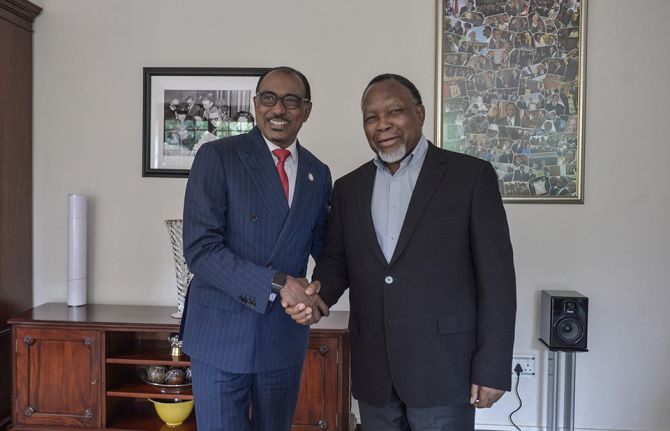 Keeping up the momentum in the global AIDS response
Keeping up the momentum in the global AIDS response

24 April 2019
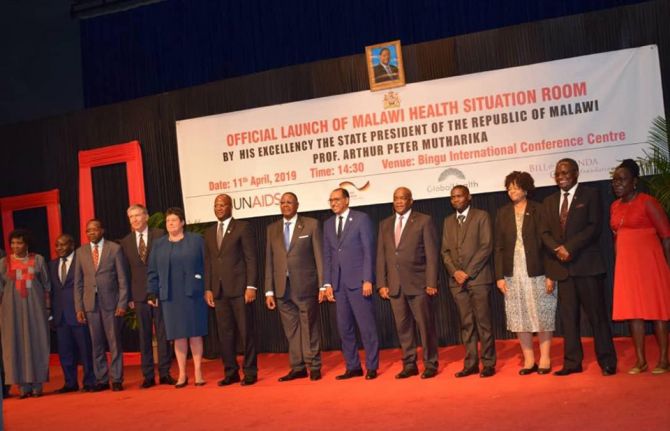 Malawi launches its health situation room
Malawi launches its health situation room

12 April 2019
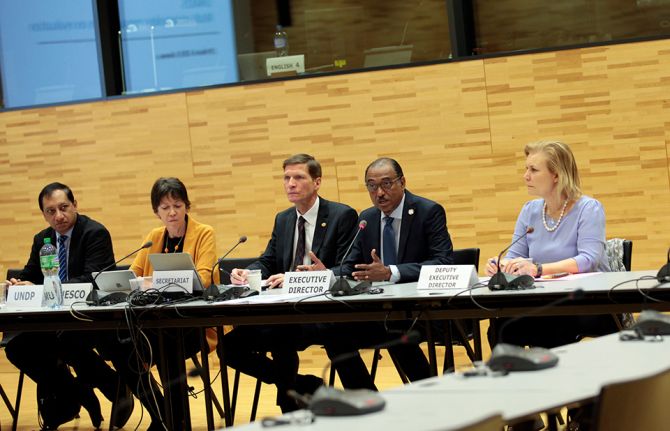 Learning lessons on evaluation
Learning lessons on evaluation

02 April 2019

Feature Story
Treatment success in South Sudan: Fozia’s story
15 August 2011
15 August 2011 15 August 2011This is an updated version of a story first published at undp.org
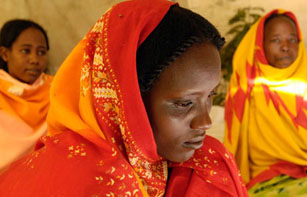
Women living with HIV waiting for treatment at a hospital in Sudan.
Credit: UN/FRED NOY
Weak and unable to walk, Fozia Bullen, from Nagbaka village in South Sudan, had lost all hope when she arrived at Maridi Hospital, one of the few antiretroviral therapy centres in the country for people living with HIV. Her doctor said she had reached a critical stage of illness, with rashes, loss of appetite, and severe weight loss.
After one month of treatment, Ms Bullen was discharged in better health and continues taking medication at home. After four months of treatment, her rashes disappeared, and she put on a significant amount of weight, which enables her to carry out daily work, tend to her gardens, and provide for her family.
She is one of many people living with HIV in South Sudan, which is considered to have a generalized HIV epidemic, with an estimated prevalence of three percent.
Under a five year US$ 27 million project of the Global Fund to Fight AIDS, Tuberculosis and Malaria, thousands of people in South Sudan are now receiving lifesaving HIV treatment. The project brings together a range of partners including the United Nations Development Programme (UNDP), the World Health Organization (WHO), other UN agencies, the Southern Sudan AIDS Commission, the Ministry of Health, and NGOs.
A total of 4,156 people living with HIV have been able to access treatment since 2008. The project, which begun in 2006, has established more than 20 treatment centres across the country.
There has also been significant progress in other key areas. As of March 2011 around 130,000 people had received voluntary HIV counselling and testing and more than 158,000 young people have been educated about the virus. This is a setting where, according to latest research, less than ten percent of people have comprehensive knowledge of effective HIV prevention methods.
The project’s notable successes in addressing the HIV epidemic in South Sudan have been achieved in a country impoverished by more than 20 years of conflict with the north. However, despite celebrations of South Sudan’s independence in July, the world’s newest nation remains fragile, with a lack of basic services and infrastructure, a depressed economy, nascent governance and legal systems, and a returning population of refugees forced to flee the country during the conflict.
To support the AIDS response in South Sudan, UNAIDS is reinforcing its office in Juba in August 2011. Recently appointed UNAIDS country coordinator, Dr Medhin Zewdu is ready to take on her new job.
“National ownership is key to a successful and sustainable AIDS response,” said Dr Zewdu. “I look forward to advancing the agenda on AIDS in discussion with the government, and with the people on the ground including civil society and people living with HIV,” she added.
Related

Feature Story
‘Confront legal and policy barriers to HIV’: Sub-Saharan Africa Regional Dialogue on HIV and the Law
12 August 2011
12 August 2011 12 August 2011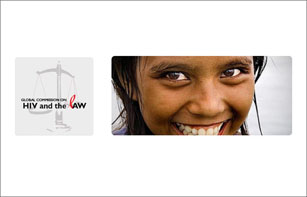
In Sub-Saharan Africa, the region most heavily affected by HIV, legal, policy and social barriers, including stigma, discrimination, gender inequality and the criminalization of key populations at higher risk of HIV infection, continue to make people vulnerable to HIV and hamper the ability of individuals, communities and states to respond to the epidemic. This was the conclusion of the Regional Dialogue for sub-Saharan Africa, part of the Global Commission on HIV and the Law, held at the beginning of August in Pretoria, South Africa.
No taboo should be left unchallenged
A significant breakthrough came from the pledge of participants to highlight and discuss all aspects of the legal environment relating to HIV, including laws and practices related to stigma and discrimination, access to affordable treatment, children and adolescents, women’s rights and gender-based violence.
“This regional dialogue is a great opportunity for us, as Africans, to confront the difficult issues including discriminatory and punitive laws that target sex workers and men who have sex with men, and other populations vulnerable to HIV,” said Bience Gawanas, African Union Commissioner for Social Affairs.
The criminalization of drug use, sex work and same-sex sexual relations was also confronted by the participants in a bid to challenge all taboos. This is remarkable as recent punitive legal and policy developments in a number of countries in sub-Saharan Africa relating to the situation of members of key populations has raised concerns about the readiness of stakeholders in the region to confront this issue. Some 31 countries in the region criminalize sex work, and same-sex sexual relations constitute a criminal offence in at least 30 countries.
Legal and policy barriers act as obstacles to HIV responses in Africa
This regional dialogue is part of a series of seven consultations organized in all regions of the world to inform the Commission on the laws, policies and practices that represent barriers to effective responses to HIV. The Global Commission on HIV and the Law, launched by UNDP and UNAIDS in June 2010, was set up to make recommendations for possible means to address these barriers.
To be effective in the AIDS response we need to address the needs of the millions of Africans who because of fear, prejudice, entrenched legal, cultural and social values and norms do not have access to HIV services or cannot live full and dignified lives
Sheila Tlou, Regional Director of the UNAIDS Regional Support Team for Eastern and Southern Africa.
Recognizing the opportunity offered by the Commission to review and explore remedies to these challenges, civil society and government representatives came together from all parts of the region.
“To be effective in the AIDS response we need to address the needs of the millions of Africans who because of fear, prejudice, entrenched legal, cultural and social values and norms do not have access to HIV services or cannot live full and dignified lives,” said Sheila Tlou, Regional Director of the UNAIDS Regional Support Team for Eastern and Southern Africa.
Holding governments accountable to commitments made
In the Political Declaration on HIV/AIDS, unanimously adopted during the June 2011 United Nations General Assembly High Level Meeting on AIDS, all Member States committed to “intensify national efforts to create enabling legal, social and policy frameworks in each national context in order to eliminate stigma, discrimination and violence related to HIV.” During the dialogue, representatives of people living with HIV, sex workers and men who have sex with men called upon parliamentarians, members of the judiciary, and other key government officials in the region to fulfil this commitment.
So far the dialogues of the Global Commission on HIV and the Law have been held in six regions, with the only outstanding session, which will focus on ’High Income Countries’, scheduled to take place on 16-17 September 2011 in the United States.
Following this consultation process, the Global Commission on HIV and the Law will develop actionable, evidence-informed and human rights-based recommendations for effective HIV responses that promote and protect the human rights of people living with and most vulnerable to HIV. The findings will be announced in December 2011.
External links
External links
Related

Feature Story
International Youth Day: Young people are the catalysts of development
12 August 2011
12 August 2011 12 August 2011
In April young people from more than 70 countries came together in Bamako, Mali for the Global Youth Summit on HIV, hosted by UNAIDS and the Government of Mali, where young people launched a call to action directed at world leaders ahead of the High Level Meeting on AIDS June, 2011.
Credit: KK
August 2010 to 2011 is designated as International Year of Youth and as the world celebrates International Youth Day on August 12, young people aged 15-24 represent one fifth of the global population. Almost nine out of ten young people live in a low- or middle-income country. Many face challenges brought about by limited access to, among other things, healthcare, education and economic opportunities.
Despite these hurdles, young women and men can play a significant role in lifting themselves, their families and communities out of poverty and protecting their health. Recent data from UNAIDS indicates that HIV prevalence has dropped by more than 25% among young people in 15 out of 21 countries most affected by HIV. While this represents significant progress, universal access to HIV prevention, treatment, care and support for young people has yet to be achieved.
“A significant step forward was taken in June 2011 when UN Member States adopted the Political Declaration on HIV and committed to harnessing the energy of young people to lead global HIV awareness,” said UNAIDS Executive Director Michel Sidibé. “Young people are choosing to have sex later, have fewer partners and are increasingly using condoms. In other words, young people are leading the world in bringing about an HIV prevention revolution.”
Young people are choosing to have sex later, have fewer partners and are increasingly using condoms. In other words, young people are leading the world in bringing about an HIV prevention revolution
Michel Sidibé, UNAIDS Executive Director
To mark the International Year of Youth, UNAIDS and partners launched on the report entitled Securing the Future Today at the end of July. The report highlights that young people account for 41% of all new HIV infections among adults with 3 000 young people becoming newly infected with HIV each day, and 4.9 million young women and men were living with HIV worldwide in 2009. In addition, in low- and middle-income countries, only 24% of young women and 36% of young men have comprehensive knowledge of HIV. In many countries, condom use still remains low, especially among young women.
Empowering young people to protect themselves against HIV requires more support to amplify the movement, led by and for young people, that is demanding rights-based, evidence informed sexual and reproductive health services including sexuality education. Social networking sites and mobile applications can be leveraged to design innovative behavior change strategies and provide new ways of organizing movements and access to information and services.
UNAIDS is currently developing a strategy on how to work more effectively with young leaders to reach UNAIDS’ vision of zero new infections, zero discrimination and zero AIDS-related deaths.
Related
 “Who will protect our young people?”
“Who will protect our young people?”

02 June 2025

Feature Story
Ghanaian AIDS advocate cycles the globe to raise awareness and leadership on HIV
10 August 2011
10 August 2011 10 August 2011
AIDS advocate Shisu Alhaji Yakubu of Ghana has biked 238 000 kilometres to raise awareness about HIV.
AIDS advocate Shisu Alhaji Yakubu of Ghana has biked 238 000 kilometres to raise awareness about HIV. After travelling to New York to participate in the UN General Assembly High Level Meeting on AIDS that took place from 8-10 June, Mr Yakubu says he will now embark on a bike ride from Vienna to Washington, DC to attend the next International AIDS Conference to be held in the United States in 2012.
Mr Yakubu attended the UN High Level Meeting specifically to meet UNAIDS Executive Director Michel Sidibé. “I came here all the way from Africa to say thank you,” he explained. In addition to meeting Mr Sidibé, he cycled to New York City to demand world leaders participating in the High Level Meeting to join forces with the voices calling for a stronger AIDS response.
“‘In unity lies strength,’ so the old adage goes,” said Mr Yakubu. “I would therefore earnestly appeal to our leaders and people living in West Africa to unite against the stigma attached to the disease,” he said.
In unity lies strength. I would therefore earnestly appeal to our leaders and people living in West Africa to unite against the stigma attached to the disease
Shisu Alhaji Yakubu, Ghanaian AIDS advocate
Mr Yakubu developed an interest for voluntary work when he was still in school, after having seen the difficulties faced by children orphaned by AIDS. When Planned Parenthood Association of Ghana selected him to represent his region of Brong-Ahafo in mid-western Ghana at the First National Youth Conference in Akropong, Mr Yakubu decided to harness his "voluntary spirit" in this direction.
During the youth conference, he says, he realized the alarming rate at which HIV was spreading in Ghana and other sub-Saharan countries. "Something must be done," he decided. "It was about time non-governmental organizations, community-based organizations, religious organizations and civil society all came together and joined the response. HIV is not a health issue any more. It's an issue about you and me."
He then chose cycling as an innovative way to raise awareness as well as a method to entertain, mobilize and encourage the involvement of communities as well as media houses.
In 2000, he organized an AIDS bike campaign in the Techiman district of Ghana, visiting schools, churches, mosques, football fields, and local radio stations. "Most of my work is concentrated towards my community, region, country and West Africa," he said.
In 2001, he embarked on a three-month nationwide bike campaign with the theme of behavioural change among young people towards safer sex. The campaign was aimed at increasing awareness about HIV and to encourage condom use. "Personally, I have a passion for humanity," he professed.
Mr Yakubu was also part of a 2009 "Know Your Status" campaign organized along with the American Peace Corps to address issues of stigma attached to testing for HIV, as well as to show support for people living with HIV.
With less than a year to go to the XIX International AIDS Conference, Mr Zakubu has many more miles to travel and people to meet to share his message that everyone can have an impact on the HIV epidemic through individual actions.
External links
External links
Related
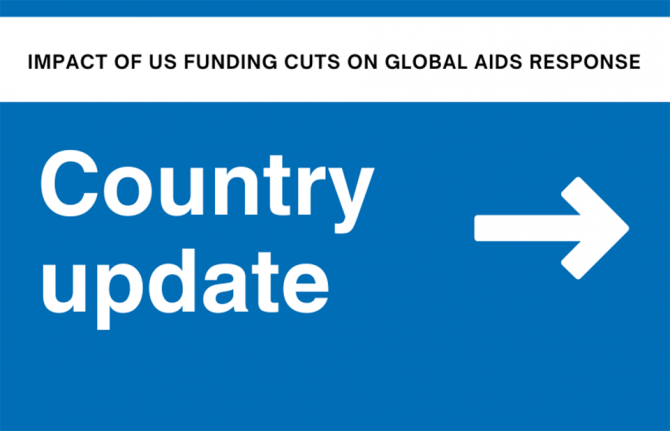 Impact of US funding cuts on HIV programmes in Ghana
Impact of US funding cuts on HIV programmes in Ghana

08 April 2025

Feature Story
“Solutions that work for us”: Indigenous people tackle HIV in South America
09 August 2011
09 August 2011 09 August 2011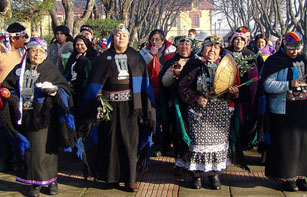
The TRAWUN included communities outside the Mapuche people and welcomed other Chilean participants from the Aimara, Diaguita and Quechua people as well as international guests.
Credit: UNAIDS
Ahead of the International Day of the World's Indigenous People, celebrated 9 August, communities and associations of indigenous people living with HIV from several Latin American countries met for the “TRAWUN HIV and traditional health from a cultural diversity approach,” in Lautaro Commune, Chile.
This ‘TRAWUN,’ the term for Great Council in Mapudungun, an indigenous language to Chile, was organized to show the advances achieved in integrating HIV as an issue within the Mapuche community. For the first time, the TRAWUN included communities outside the Mapuche people and welcomed other Chilean participants from the Aimara, Diaguita and Quechua people as well as international guests from the Zapoteca in Mexico, the Chiquitano from Bolivia and the Waranka from Ecuador.
“This is a pioneering partnership in the region,” said Dr Annabella Arredondo, UNAIDS Coordinator in Chile. “Indigenous leaders are key allies in the response to HIV in the whole of Latin America, as it is one of the populations that need a culturally appropriate work to include prevention.”
The leaders of different Mapuche groupings have acknowledged HIV as a challenge in their communities and have undertaken different activities to prevent new HIV infections. Among the Mapuche, culture, tradition and knowledge is passed on to the next generation through elderly women, and the Trawun explored if information about HIV prevention could follow the same route.
Indigenous leaders are key allies in the response to HIV in the whole of Latin America, as it is one of the populations that need a culturally appropriate work to include prevention
Dr Annabella Arredondo, UNAIDS Coordinator in Chile
According to the participants, there is a lack of information about HIV among the indigenous peoples in Chile, a problem they share with other Latin American countries.
Indigenous people have particular vulnerabilities to acquiring HIV, as many of the key risk factors that make individuals and communities vulnerable to HIV are present in large numbers of indigenous populations around the world. Some examples of this include marginalization, poor health in general, low literacy rates, limited access to health care, as well as high prevalence of injecting drug use and alcohol consumption.
“The situation of poverty, marginalization, stigma and discrimination in which indigenous communities live, put many people at higher risk of HIV infection,” said Amaranta Gómez Regalado, from Binni Laanu Juchitán, Mexico. Other key issues raised during the TRAWUN focused on sexual and cultural diversity and identity as well as the most appropriate way to include HIV prevention among the communities.
“For many years, we have fought a long battle against HIV in the region,” said Santiago Flores, President of Smiths for Life Rancagua, an institution renowned for its advocacy for human rights for people living with HIV. “Thanks to many joint efforts and volunteer work, we have positioned HIV within public policy and helped different groups and individuals, be it people living with HIV or their family and friends.”

Feature Story
Empowering women to protect themselves: Successes in female condom programming
08 August 2011
08 August 2011 08 August 2011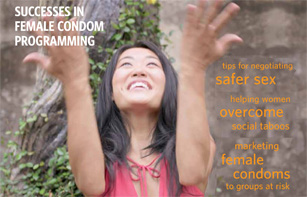
Cover of the UNFPA report: HIV prevention gains momentum: Successes in female condom programming.
Credit cover photo: Jack Hollingsworth/Blend
Ensuring that high quality condoms are widely available, either free or at an affordable price, is fundamental to a pragmatic and effective AIDS response. In a recently published report, the United Nations Population Fund (UNFPA) focuses on the increasing use of female condoms and highlights how millions of women around the world are now using this method to protect themselves against HIV.
HIV prevention that women can control
Titled HIV prevention gains momentum: Successes in female condom programming, the report looks at the issue through the prism of national case studies. These pinpoint how a variety of partners have come together, pooling ideas, expertise and resources, to empower women to access female condoms. This is crucial as HIV is the leading cause of death among women of reproductive age worldwide, and in sub-Saharan Africa 60 percent of all people living with HIV are female.
“Girls and women remain vulnerable to HIV and we have to summon the courage and political will to empower and protect them,” said Dr Babatunde Osotimehin, UNFPA’s Executive Director, quoted in the report’s foreword. “We have to invest in practical tools that women can use to protect themselves, such as the female condom,” he added.
Concerted efforts appear to have an impact: the report states that access to female condoms has increased dramatically over the last few years, with 50 million used in 2009. Today condoms are available in more than 90 countries through public health programmes. However, availability and price remain issues as the female condom can cost as much as one US dollar per unit and, despite considerable progress made, in 2009 only one female condom was available for every 36 women worldwide.
Stories highlighted in Successes in female condom programming range from coffee ceremonies in Ethiopia where married women help each other break taboos surrounding condoms, to networks of hairdressers and small businesspeople in Guyana, Malawi and Zimbabwe encouraging their clients to use them.
Innovative distribution outlets
For example, Langton Ziromba owns a small barbershop in Zimbabwe’s capital, Harare, and in addition to giving haircuts and shaves he also promotes and sells female condoms to his male customers. Mr Ziromba is one of around 70 barbers and 2000 hairdressers in the country trained by Population Services International (PSI), a UNFPA partner. Such activity, the report outlines, has contributed towards the growth in sales of female condoms through social marketing and public sector programmes from one million in 2005 to more than five million in 2009.
Other countries, such as Myanmar, have focused on key populations like sex workers and men who have sex with men. In 2006 UNFPA entered into an agreement with the Myanmar government and PSI to provide 700,000 female condoms to these groups over a three year period. According to the report, progress was “remarkable” and in the first year of the initiative use of female condoms among sex workers nearly doubled from 20 percent in 2004 to 36 percent in 2006.
Building national capacity for programming
The publication also draws attention to the push to increase the capacity of national governments and their partners to implement comprehensive condom programming, of which female condoms are an integral part, with a view to outside assistance eventually being phased out.
Since 2002 UNFPA has been the lead agency for the UN Inter-Agency Task Team on Comprehensive Condom Programming and plays a key role in discussions on funding, technical assistance and regional and global support. It also works with governments and partners to stimulate demand and facilitate the design and implementation of culturally appropriate condom programming so that individuals around the world are empowered to protect themselves against HIV.
External links
External links
Publications

Feature Story
Mobile application for HIV data visualization at your fingertips
05 August 2011
05 August 2011 05 August 2011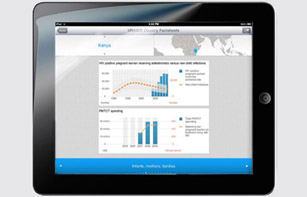
More than 600 people around the world have downloaded the UNAIDS AIDSinfo application for the Apple iPad since its launch in June, 2011. The ‘app’ provides immediate access to key country by country HIV data and can help policymakers, researchers and educators to better understand why and how HIV infection is spread and where treatment, care and support programmes are needed.
Research indicates that people are increasingly turning to this new mobile device to find information; there are currently tens of millions iPad users. “UNAIDS is committed to making information and strategic policy advice about the AIDS epidemic widely available,” said Dr Bernhard Schwartländer, Director, Evidence, Strategy and Results Department. “We will continue to be innovative in the tools and channels we use to reach decision-makers and advocates with timely and accurate information.”
We will continue to be innovative in the tools and channels we use to reach decision-makers and advocates with timely and accurate information
Dr Bernhard Schwartländer, Director, Evidence, Strategy and Results Department
The AIDSinfo iPad app presents factsheets on 192 countries, comprising data, trends and charts on HIV epidemiology. Some of the functions include sharing key information via email, posting charts to Facebook and an RSS news feed. Although the application was optimized for the Apple iPad, with touch-based controls, a visible link is provided to the AIDSinfo database online, which contains additional data and powerful tools to enable more comprehensive investigations of the HIV epidemic.
UNAIDS is continuing to monitor usage of the app, review user feedback and evaluate options for further development including platform-agnostic access based on HTML5 and expansion of the AIDSinfo database via mobile and other interfaces.
The AIDSinfo iPad app is free from the Apple iTunes store, and AIDSinfo is available via the internet. For more information visit the UNAIDS website.
Related
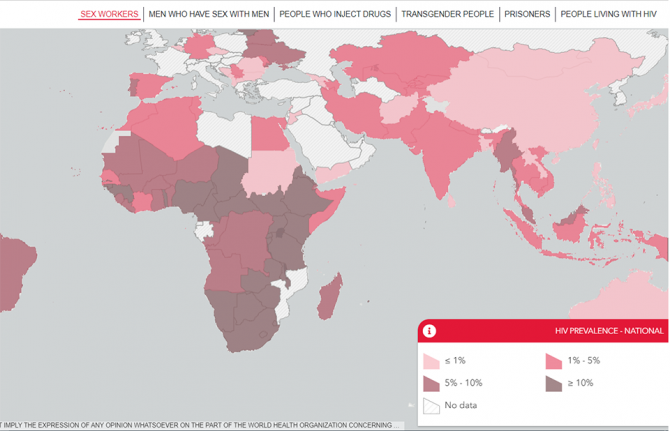 New indicators added to Key Populations Atlas
New indicators added to Key Populations Atlas

06 January 2022

